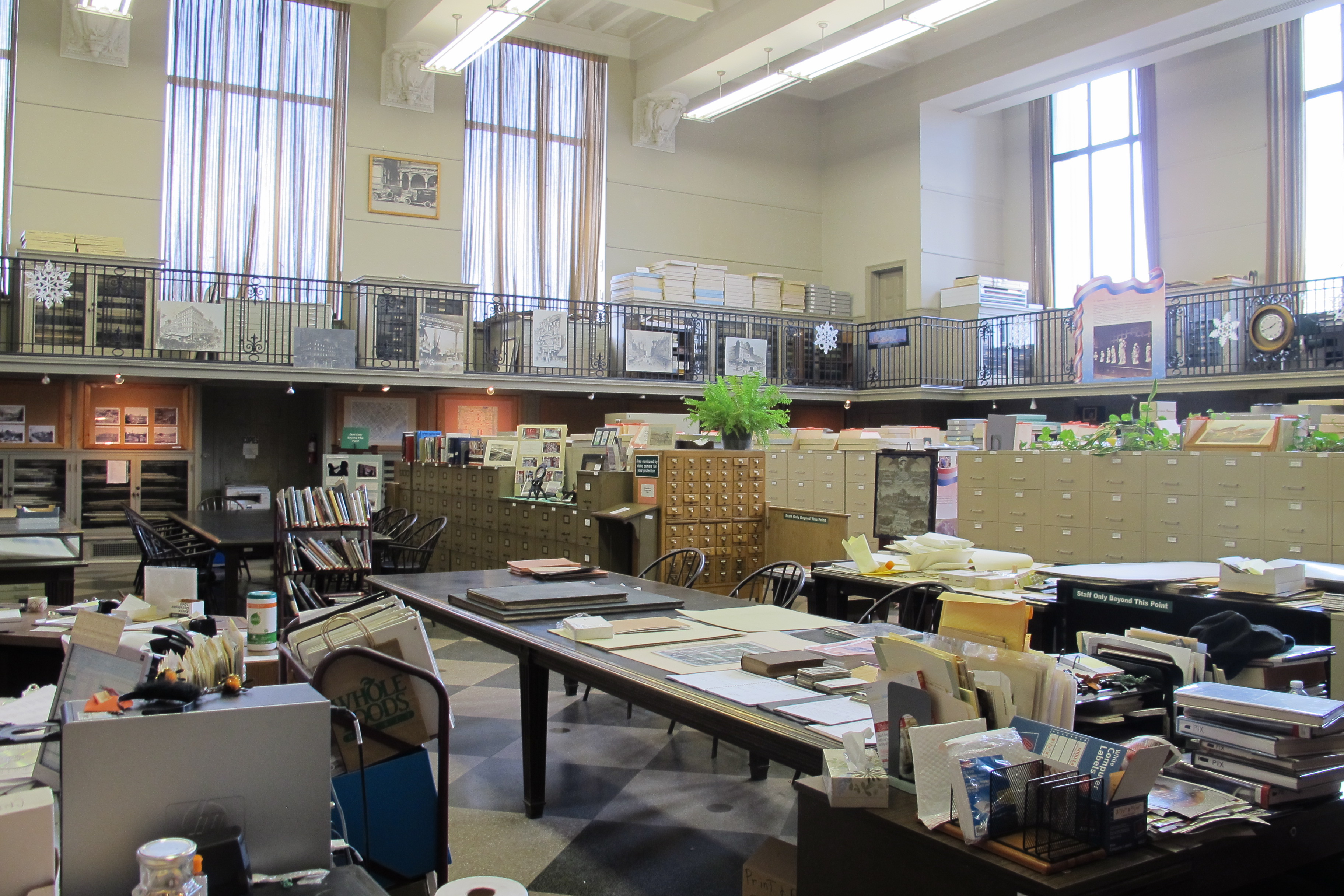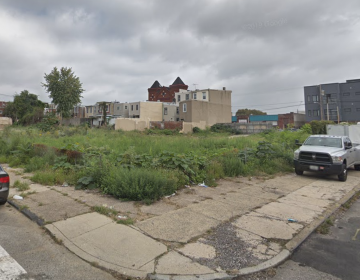Checking out: As Free Library’s role shifts, where does that leave Parkway Central’s special collections?

The Free Library is grappling with how to be a better 21st century resource for a needy city. Recent years have been tough on the library – budget and staff cuts, threats of branch closures, overdue repairs – and a recent report by the Pew’s Philadelphia Research Initiative explored the Free Library’s current challenges and opportunities in comparison to other big-city systems.
The library for its part is willing to change with the times, taking a distinctly utilitarian approach: do the most good for the most people.
Some shifts, like adding more computing resources and renovating branches, will bring big improvements for neighborhood libraries and the communities they serve.
But I’m left wondering where this leaves the Parkway Central branch’s special collections?
I’m talking about resources like the library’s vastly important Fleisher Collection of Orchestral Music with more than 21,000 orchestral titles (the world’s largest available to borrow), or the WPA-era Philadelphia Graphic Arts Workshop archive, or the Early American Children’s Book collection (started as a gift of A.S.W. Rosenbach). The list goes on.
While these collections might not be critical to the library’s day-to-day function, they help make the Free Library a world-class public institution.
Given the library’s financial picture and a lot of competing priorities, pieces of the library’s special collections could be up for grabs. A recent Inquirer article explained the process underway: An inventory study, expected to be done by May – there are more than one million items in the Prints and Picture Collection alone – will go to the special collections committee, which decides what will go and what will stay.
“We’re reviewing every item,” says [Free Library president/director Siobhan] Reardon.
A number of factors will be considered, including wishes of the item’s donor (if applicable) and relevance to the collection. In addition to books, the library has an impressive trove of ephemera, as well as original paintings and sculpture. Warhol Campbell’s Soup Can and Jacqueline Kennedy Onassis prints are being considered for sale, according to a Pew Charitable Trusts study on the library released last week.
Some holdings may have better homes elsewhere; others will be kept because of connections to the library that may not be immediately obvious, Reardon says. I cringe when I hear that the library is contemplating getting rid of pieces of its vast and wondrous collection.
I was a public library kid, and as a researcher today I love working with librarians like Richard Boardman, head of the Map Collection, and Aurora Deshauteurs, a curator from Print and Pictures. Both know their collections intimately and are a pleasure to work with. They find what the online catalogue can’t.
On a recent visit to see a set of historic aerial photos of Philadelphia, Deshauteurs told me that Sotheby’s has made three appointments to see the Print and Pictures Collection’s holdings to appraise pieces in the collection.
“What we don’t sell, we’ll at least have an idea of what our collection is worth,” Deshauteurs told me, trying to put a positive face on a topic that disappoints her.
The reality is that the library is considering all of its options, which includes the possibility that parts of its public collections could be sold to private buyers or peer institutions.
Reardon told the Inquirer that “every item” is being evaluated, but at an event about the future of the library last week she said, that the “depth and breadth of the collections here are what people need access to.” So which is it?
The library’s Print and Pictures collection is a delightful relic comprised of about 1.5 million items. Among them are more than 20,000 historic images of Philadelphia and more than 8,000 prints, photographs, and drawings from American history. Sadly, much of this collection lives in the dark since only a portion is digitized and the online catalogue is less than optimal. (A new catalogue recently launched in beta, so we’ll see how useful that is.)
Would it be harder for the public to accept the library’s decision to pick apart and sell off its holdings if we actually knew what was in some of these collections?
If you go to the Print and Pictures collection – which I encourage – you’ll be in a room built to house this big collection when the library aspired to be a world-class public repository.
A example of that ambition sits behind Aurora Deshauteurs’ desk in 24 huge volumes of Giovanni Battista Piranesi’s original 18th century etchings of Rome. Each page is punctured with the words “The Free Library of Philadelphia,” suggesting real permanence, but times do change. Sotheby’s was apparently keenly interested.
Piranesi etchings are also in the Philadelphia Museum of Art’s collection, but at the library you can put on a pair of white gloves and turn the pages of the massive volumes yourself. It’s a wholly different way to connect with history and art. The library isn’t an art museum, but it is one of Philadelphia’s great cultural institutions.
“We are at the threshold of the arts,” said Deshauteurs of the library’s gateway position on the Parkway. “Shouldn’t we be attracting people who come for the Barnes?”
A week later, Reardon said as much herself, speaking to the library’s significant collection and its proud place as “one of the most amazingly pluralistic” cultural institutions on the Parkway.
Unlike the Barnes and its Parkway brethren, the Library is free. But Deshauteurs corrects me – the Free Library is not free. We as taxpayers pick up the tab, and its collections really belong to us. So I hope the library weighs any short-term cash infusion against a deep long-view about making sure the library’s important special collections remain publicly accessible, ideally at Parkway Central.
Libraries are just as much for job searchers or teens doing homework as they are for recreational readers and esoteric explorers. The Parkway Central library is filled with treasures, let’s show off what we’ve got.
In that spirit, Eyes on the Street is going to begin featuring pieces of Philadelphia’s urban history from the Print and Pictures collection. The project is still in the works, but I hope to start soon by showing off some incredible aerial photographs of the city taken from the 1920s-1950s. I saw these for the first time recently and was blown away by the incredible resolution of the large-format prints. Stay tuned for those and hopefully many more images of our city.
For now, visit Print and Pictures here:
Want more:
- The Pew Charitable Trust Philadelphia Research Initiative report “The Library in the City: Changing Demands and a Challenging Future”
- Friends of the Print and Pictures Collection on facebook,
- Friends of Pix website
WHYY is your source for fact-based, in-depth journalism and information. As a nonprofit organization, we rely on financial support from readers like you. Please give today.







